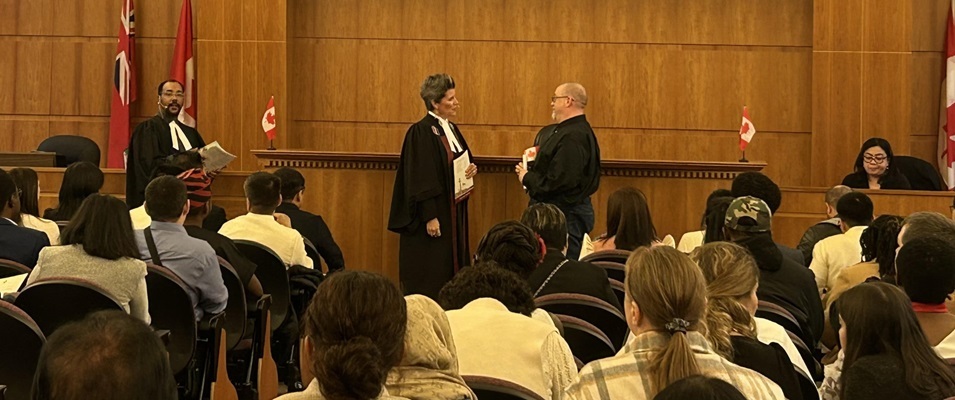
Content warning: physical and sexual abuse, grooming, victimization, and trauma.
Readers who were around in the 1960s, or who were parented by folks who were growing up in the 60s, may be familiar with the concept of “stranger danger.” Similar to the fears of satanic ritual abuse in the 1980’s, stranger danger was a form of moral panic—a widespread fear spreading through a population that may or may not be based on reality.
According to many books, television specials, films, and news outlets of the day, child abductions and abuse by nefarious individuals lurking in the shadows was alarmingly common. Parents were urged to educate their children about the potential threat around every corner, to treat unknown individuals as dangerous, and to only talk to trusted adults. By doing so, parents were told, they would protect their children from becoming victims of kidnapping or worse.
In the decades since, our approach to protecting children from victimization has changed greatly, and stranger danger no longer features as prominently. This is not to say that strangers can never be a source of abuse or assault for children and adolescents, and not getting into a stranger’s van when offered candy is good advice no matter your age.
However, data from every corner of the Western world shows that trusted adults, not strangers, are overwhelmingly more likely to be the perpetrators of sexual abuse and assault against children and teens.
These trusted adults can play many different roles in a child’s life. They can be family, older friends, coaches, or religious leaders. As was recently seen in Steinbach, they can be teachers.
Sometimes these abuses are spontaneous or opportunistic; an abuser finds themself in an unexpected situation with a young person and exploits it. Oftentimes, though, the abuser will take weeks, months, or longer to prepare their victims. Experts in the field of child victimization call this process grooming.
Grooming is a complicated process by which an abuser attempts to build a trusting relationship with a child or adolescent, and often their family, with the aim of committing sexual abuse and decreasing the risk that they will be caught.
Abusers have specific goals that follow a pattern: gaining access to the child, gaining the child’s compliance, escalating the inappropriate behaviour, and maintaining the child’s secrecy. Grooming can happen in person or (increasingly) online and often occurs from someone who is in a position of confidence with the child or family.
Even if the grooming never leads to actual abuse—due to the abuser getting caught, moving away, or losing access to the victim—the victim may still experience lasting harms. The process of grooming involves isolating the victim, destabilizing their trust in relationships with people other than the abuser, coercion, and subjecting them to confusing and often distressing patterns of behaviour.
Decades later, individuals who were subjected to grooming can have issues with trust or having healthy relationships as adults.
Some situations or contexts may facilitate grooming more than others. Religious groups have long been an arena in which abusers are able to not only find victims but have their behaviour willingly covered up by fellow believers.
While most people will be familiar with the clergy sex scandals that have been coming to light for decades, this tragic trend is not limited to the Catholic Church. A significant body of data exists showing the issue is rampant in evangelical churches. For just one example, see the recent Southern Baptist scandal.1
Social scientists from the University of Alberta have concluded that religious contexts can facilitate both the grooming process and the secrecy after abuse occurs. Some of the contributing factors they identified included power imbalance in relationships, reverence towards religious leaders, patriarchy, the emphasis on obedience, and fears about spiritual punishments (for example, going to hell).
Parents of victims who have been abused in the church may even be shamed into not believing their child could have been abused by a trusted religious leader, further eroding the relationship of trust between parent and child.
Here are some common signs in your child or youth’s behaviour that may indicate that they are being groomed: (1) being secretive about how they spend their time, whether it be online or elsewhere, (2) having unexplained money or gifts, (3) being unwilling to talk about their recent activities or feelings, (4) showing signs of distress such as being withdrawn, anxious, or avoiding their usual friends or activities, and finally, and especially, (5) demonstrating sexualized behaviour—that is, the knowledge or use of language about sex that would be more appropriate for someone much older.
After reading this alarming content, most caring parents will likely feel highly motivated to prevent their child or youth from falling victim to the grooming process.
Here are some selected strategies developed by experts in the field that you can use to reduce your young person’s risks.
1. Teach your child that their body belongs to them. This can be as simple as making sure they always have the right to say no, even when it involves hugging a grandparent or otherwise showing affection when they don’t want to. An abuser may try to shame a child into accepting unwanted touching, and it’s important for your child to know that this is never appropriate.
2. Talk about secrets and secret-keeping. Explain the difference between a surprise (like a present you’ve bought for a friend) and a secret (something you aren’t supposed to tell anyone), and that they will never be in trouble if they tell you something that another adult asked them to keep secret.
3. Teach your child about consent in relationships, early and often. Use examples you see together in television shows, movies, and real life, and ask your child if they see people asking for consent or respecting each other’s boundaries.
4. Talk to your child about when it is appropriate to be taking and sharing photos, especially photos of themselves. Abusers will often coerce the victim for photos and use the earlier photos as blackmail for other, more serious acts.
5. Talk about being assertive. Let them know that saying no to unwanted touching is a complete statement. They never need to provide an explanation for not wanting to be hugged, touched, tickled, or picked up.
6. Provide age-appropriate sexual education. This will reduce the effectiveness of grooming tactics, especially tactics intended to desensitize your child to sexual touch.
7. Finally, and this cannot be emphasized enough: always believe your child when they report unwanted touch, requests for secrecy, or other distressing behaviour from adults—even when those adults are people you know and trust.
The effectiveness of grooming can be greatly reduced when an open, frank, and trusting relationship exists between parent and child.
And as a reminder to our readers, in Canada there is no statute of limitations for reporting sexual abuse or assault to the police. If you or someone you care about needs help, please contact your local RCMP detachment.




















